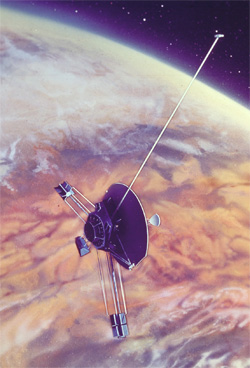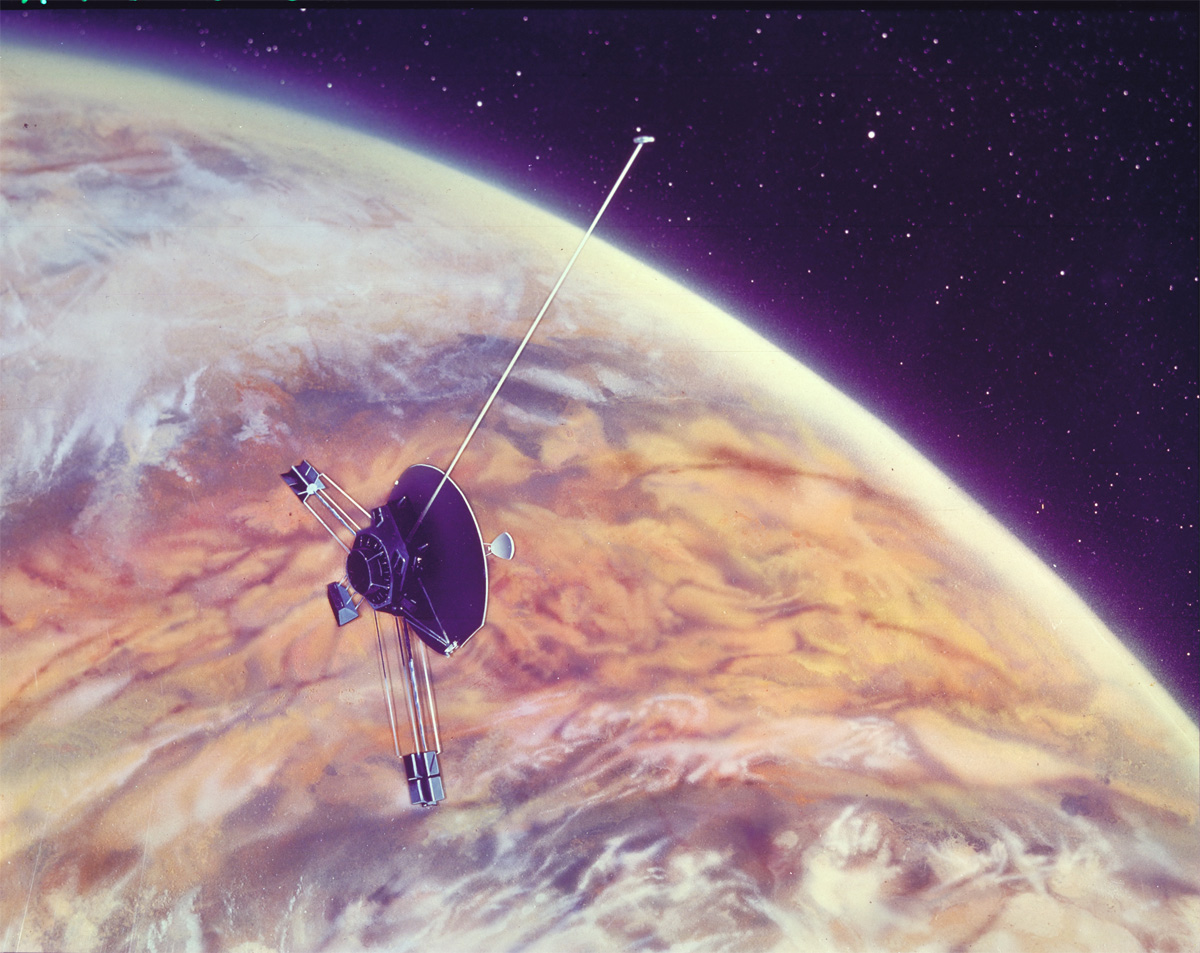Pioneer Anomaly is Fading
The Pioneer anomaly is a tiny, unexplained deceleration of the Pioneer 10 and 11 spacecraft, which are now at the edge of the Solar System. A 19 August report in Physical Review Letters describes an arduous, multi-year effort to accurately define the anomaly by gathering and analyzing all available tracking data for the two probes. The analysis shows that the anomaly is not constant, as researchers had believed, but is decreasing with time. The finding points toward a conventional explanation of the phenomenon, most likely asymmetric radiation of heat, and against some of the more exotic proposals.
Pioneer 10 and 11 were launched in 1972 and 1973 to observe Jupiter. Pioneer 11 continued on to a 1979 encounter with Saturn. Researchers used the Deep Space Network, a worldwide system of antennas, to stay in contact with both craft–Pioneer 10 until 2003 and Pioneer 11 until 1995. Today, both Pioneers are more than twice as far from the Sun as Pluto is.
Once they had passed beyond Saturn, the motion of both craft should have been determined mainly by the Sun’s gravity, along with small influences from other planets and drag from dust and charged particles. Taking all such effects into account, however, researchers found that both probes were sailing toward interstellar space less quickly than expected. A 2002 analysis indicated a seemingly constant anomalous acceleration of almost meters per second-squared, directed toward the Sun [1].
Researchers proposed a variety of explanations for the anomaly. Some were exotic, involving non-Newtonian gravity or even cosmological influences, but others relied on standard physics, such as gas leaks or uneven radiation of heat from the probes’ onboard nuclear power plants. These more conventional explanations, however, implied an acceleration that should decrease over time, contrary to what analyses indicated.
Slava Turyshev of the Jet Propulsion Laboratory in Pasadena, California, a coauthor of the 2002 study, embarked with new colleagues on an effort to hunt down more Pioneer tracking data. They found archival records going back several decades, much of it stored in obsolete software formats or on punch cards. “We spent ten years looking,” Turyshev says, “and the search for new data is over.” A good deal of it was corrupted, he adds, but the team has now transferred everything salvageable into modern formats. They now have 23.1 years worth of data for Pioneer 10, compared with 11.5 years that went into the 2002 study, and 10.75 years for Pioneer 11, compared with 3.75 years previously.
Collecting the data was only half the battle. Inferring the probes’ motion from Doppler analysis of signal frequencies was complicated by the fact that when the craft passed Jupiter, communication frequencies and protocols were tweaked to make it easier to maintain contact. Some changes were recorded only on handwritten notes, Turyshev says. Moreover, the Deep Space Network evolved, with some stations going out of service and new ones replacing them. The team even had to catalog earthquakes that might have shifted the positions of stations enough to throw off their reconstruction of the Pioneers’ trajectories.
Evaluating this painstakingly compiled trove of data, the team confirms that the Pioneer anomaly is real. However, they find that the anomaly is slowly diminishing, although they cannot say whether the decrease is linear or exponential. They also find that it’s impossible to say whether the deceleration points toward the Sun or toward the Earth.
A decreasing anomaly offers renewed support for the idea that the craft experience small forces because of the way their complex shapes reflect and radiate waste heat. Turyshev and his colleagues are now finishing a detailed analysis of heat emission to see whether it could have the magnitude and direction needed to explain the anomaly.
Louis Scheffer, an electronics engineer now working in neuroscience at the Howard Hughes Medical Institute’s Janelia Farm Research Campus in Ashburn, Virginia, has long championed heat emission forces as the explanation of the anomaly [2]. He says that “the only serious argument against them was the constancy” of the effect. Although he suspects that some proponents of modified-gravity explanations will be reluctant to abandon their ideas, “I think [the new analysis] should settle the question.”
–David Lindley
David Lindley is a freelance science writer in Alexandria, Virginia.
References
- J. D. Anderson, P. A. Laing, E. L. Lau, A. S. Liu, M. M. Nieto, and S. G. Turyshev, Phys. Rev. D 65, 082004 (2002)
- L. K. Scheffer, Phys. Rev. D 67, 084021 (2003)





